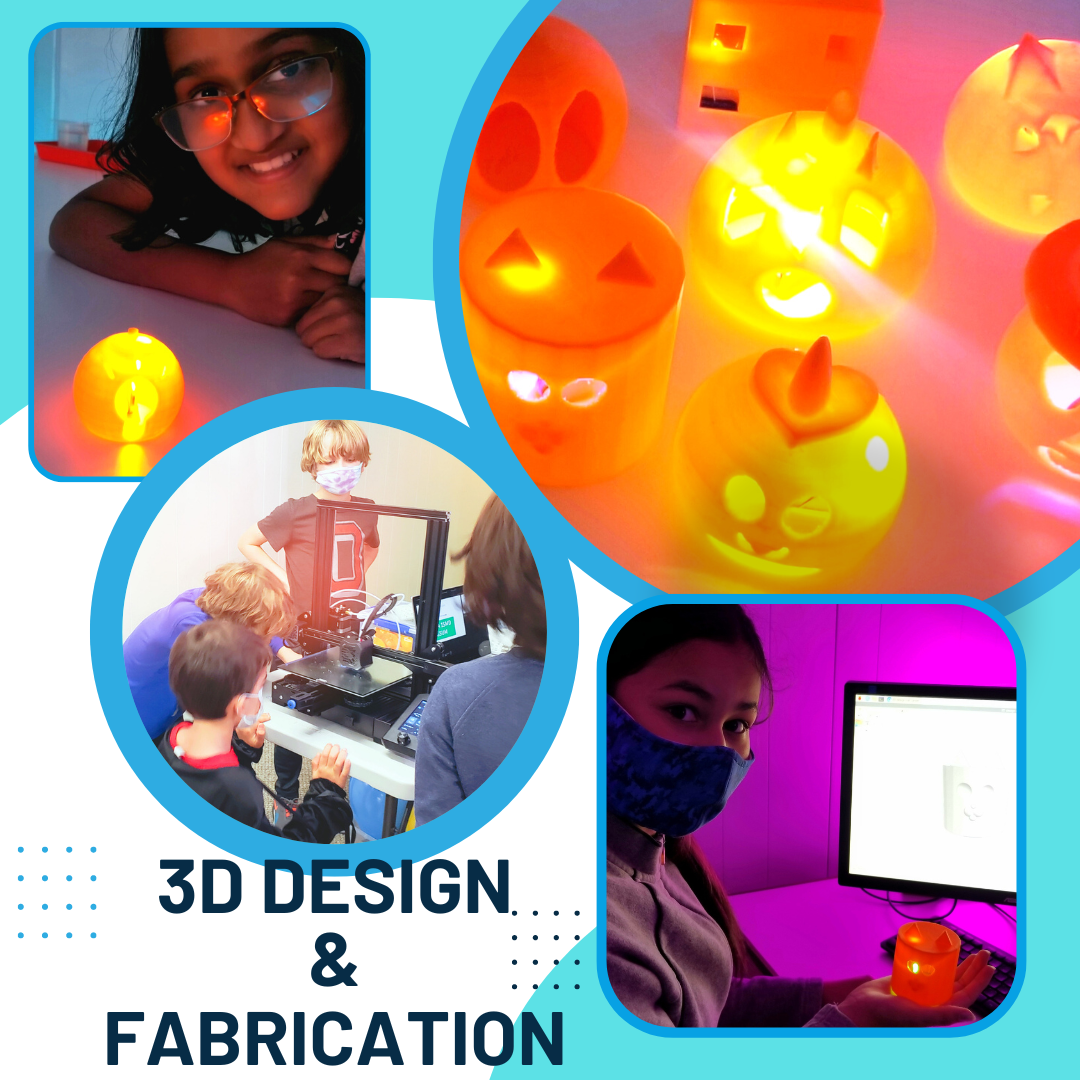
What is 3D Design and Fabrication?
Digital fabrication technology also referred to as 3D Printing or additive manufacturing, is a method of making a physical object from a three-dimensional model from a digital file or CAD model. It is ‘additive’ in that it doesn’t require a block of material or mold to manufacture physical objects, instead, the material is deposited, joined, or solidified under computer control, with material being added together, typically layer by layer.
Sounds high-tech doesn’t it? But believe it or not, computer-aided additive manufacturing processes have been around for more than 30 years. However, the technology, now most commonly referred to as 3D Printing, is advancing rapidly, making its way to labs, schools, and even homes, reshaping manufacturing in the 21st century.
3D design and fabrication opens up inspiring possibilities and opportunities. Users from kids to adults can immediately hold, evaluate, test, and use their ideas, reshaping the fields of art, design, architecture, science, technology, and engineering by revolutionizing how things are made.
But you still might be asking:
- Why bring 3D printing into the lab?
- How can 3D Printing help my child learn problem-solving skills and develop critical thinking?
- How will 3D Printing technology engage my child and help them in their future?
To help answer those questions, let’s dive into the Top 3 Reasons STEAMwhiz Uses 3D Printing as an Educational Tool.



Top 3 Reasons for 3D Printing in the Lab
1. Put the “A” in S.T.E.A.M
The arts are vital for student success!
3D Printers have emerged as powerful tools to introduce art in the lab, where students have the freedom to create, innovate, and solve. Through the use of 3D design and fabrication, our lab participants, your students, will engage themselves in the full design process from start to finish. Using computer-aided design (CAD) software, lab participants will design 3D objects using elements of art, math, and engineering and then create physical representations of that object using one of our several printers.
By designing 3D objects using CAD software, students can better understand how 3D shapes fit and work together to create 3D models based on their imagination, as well as scientific and mathematical principles. Being able to understand how 3D shapes work and fit together can also result in an improvement in spatial intelligence, an overlooked indicator of future student success, and a vital part of learning development, according to a recent study by Vanderbilt University.
2. Growth Mindset – Learn from Failure
In a traditional classroom, student success is normally measured by a passing or failing grade on a test. While there are many flaws in this approach, this approach mainly ignores the lessons that can be learned from failure. The lessons we learn from failure are just as important as the lessons we learn from success, or even more important. Failure develops resiliency, and being able to learn from our mistakes is a vital skill that we want to support in our students – not only as a character trait but also as a skill set for their future.
3D design and fabrication have been proven to be great tools for facilitating learning through failure. As students undergo the design process of analyzing, modifying, and testing their design multiple times before they are successful. If a print ends up failing, students will be able to go back to analyze and modify their design until they are successful. Even Yoda said, “The greatest teacher, failure is.”
3. Real-World Problem Solving
Giving our students dynamic experiences can instill the passion for ‘thinking & doing’ and plant seeds for the future.
Not only does the 3D printing process from design to fabrication make subject matter and technical subjects more engaging but also ignites students’ curiosity and interest in STEM fields – this is especially valuable when applied at an early age. This is why we have created a lab program specifically designed for our littlest ‘thinkers & doers’ from 5.5 to 7 years old.
One of the biggest benefits of 3D printing is its ability to facilitate real-world problem-solving in the lab. Whether it’s accelerating the innovation process so students can experience the entire product design process from A to Z or innovating actual designs to solve current real-world problems from assistive technology to 3D printed coral, to large structures such as bridges, houses, and even boats.
3D Printing has the power to change the way students learn! But make no mistake – leveraging educational technology isn’t as simple as having the latest and greatest technology in the lab – it’s about effectively integrating that technology into the curriculum in a way that engages, supports, and inspires all learners and that’s what we do here at STEAMwhiz – CREATE + INNOVATE + SOLVE!
